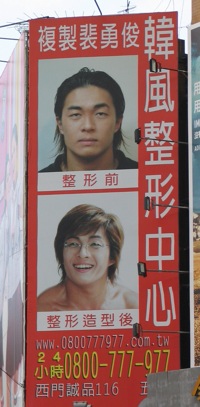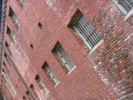Wow. Marmot’s Hole just blogged about some pictures drawn by children on display in a subway station. See the pictures here, with a second set of photos here. If these pics go down for any reason, contact me and I’ll mirror them.
I am almost inclined to believe this is some kind of prank, especially since the poster, someone named “Gord” appears to have completely bought the Japanese right-wing nationalist narrative of the colonial period in Korea. Perhaps his love for comics eventually led him to spend a little too much time with the illustrated books by Japanese fascist writer Kobayashi Yoshinori.
However, the pics seem to be legit. I find it so hard to imagine organizing an entire group of children/teenagers to produce such a huge collection of artwork showing such amazing hatred for Japan. Another posting on the website says they come from this junior high school. Notice the much more watered down selection of pictures from the collection the school chose to include on the school website here. They include only “positive” images of patriotism. There are some articles online about this in Korean which I haven’t read but those of you who can might want to check out here, and here.
There simply can be no better follow up on my posting yesterday where I mention the large numbers of children at the prison museum that I argued cultivates a blanket hatred for Japan.
These pictures are absolutely amazing, and will regrettably feed the arguments of right-wing Japanese who wish to portray, wrongly, Koreans and Chinese as all rabidly irrational nationalists who spew nothing but violent threats and lies about the past. This serves neither the purpose of encouraging a productive and careful consideration of the tragic legacy of war and imperialism in East Asia, nor serves the future of grass roots level relations between the peoples of this region. Neither do, however, the pictures in question and the people and institutions which instigate the emotions that motivated these students.
UPDATE: Ok, some of you have read the comments and I’m starting to get bizarre emails as well. Apparently my English above, designed to show my shock at the pictures, was too difficult and a number of readers think I am claiming that the pictures are a fabrication when I say “I am almost inclined to believe.” For the record, I think the pictures are real. Zheesh…
UPDATE: I just got an email from someone nice enough to send me a link to an article discussing Korean reactions to the pictures. He notes that the general majority seemed to have an adverse reaction to the pictures.

